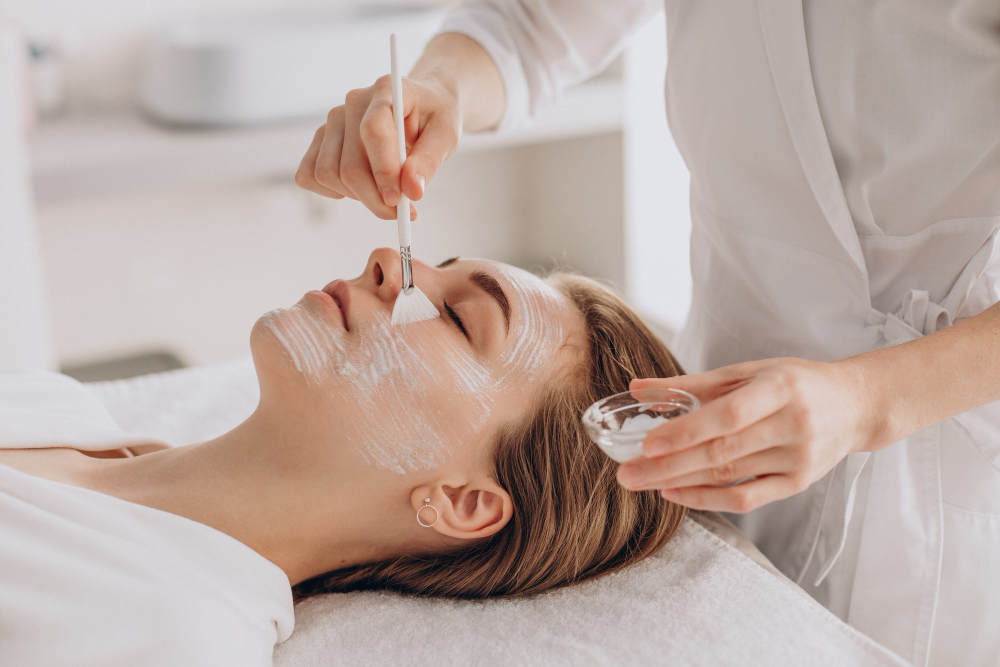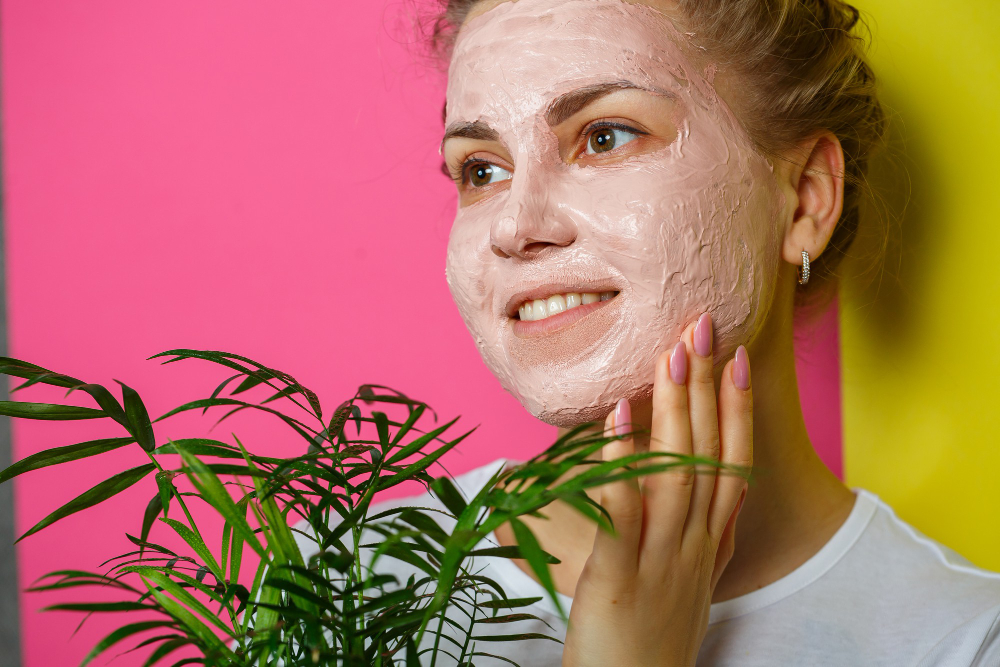CONTENTS

The Power of Lactic Acid for Skin: Your Key to Glowing
When it comes to taking care of your skin, there are countless products and ingredients to choose from. However, one ingredient that has been gaining popularity in recent years for its numerous benefits is lactic acid for the skin.
As one of the most popular alpha hydroxy acids (AHAs) in the skincare world, lactic acid has many benefits that can help you achieve a radiant, glowing complexion.
This article will take a deep dive into the power of lactic acid for skin and how you can make it a part of your skincare routine for stunning results. Read on!
What Is Lactic Acid?

Lactic acid is one of the most popular alpha hydroxy acids (AHAs) in skin care and is derived from milk. As a water-soluble acid, lactic acid works wonders by gently exfoliating the top layer of dead skin cells, revealing smoother and brighter skin underneath.
One of the key benefits of lactic acid for skin, compared to other AHAs like glycolic acid, is that it is less likely to cause irritation or sensitivity.
In addition to its exfoliating benefits, lactic acid stimulates collagen production, which can help reduce the appearance of fine lines and wrinkles.
Additional Benefits of Lactic Acid

Lactic acid has several benefits for the skin, including:
Exfoliation
Lactic acid is a gentle exfoliant that helps to remove dead skin cells and unclog pores. It breaks down the bonds between skin cells, allowing them to slough off more easily.
Unlike harsh physical scrubs, lactic acid for skin exfoliation does not cause micro-tears in the skin, which can lead to irritation and inflammation.
Moisturization
Lactic acid is a humectant, which means it helps to attract and retain moisture in the skin. By increasing the water content of the skin, lactic acid can help to improve skin hydration, elasticity, and smoothness.
It also helps strengthen the skin barrier, reducing moisture loss and protecting against environmental stressors.
Brightening
Lactic acid can help to brighten and even out skin tone by reducing the appearance of dark spots, hyperpigmentation, and discoloration. It does this by inhibiting the production of melanin, the pigment that gives skin its color.
Lactic acid can also help stimulate collagen production, improving skin texture and firmness.
How to Use Lactic Acid Safely

Using lactic acid treatment can be a game-changer for achieving glowing skin, but it’s crucial to use it safely. Here are some tips to keep in mind when incorporating lactic acid into your skincare routine:
- Start slow: It’s essential to begin with a lower concentration of lactic acid and gradually increase it as your skin adjusts to avoid irritation or sensitivity.
- Use at night: Lactic acid can make your skin more sensitive to the sun, so it’s best to use it at night and follow up with sunscreen during the day to avoid any potential damage.
- Moisturize after use: Lactic acid can dry, so it’s important to follow up with a moisturizer to replenish your skin’s natural moisturizing factor and maintain its hydration levels.
Possible Side Effects
Sun Sensitivity

When using lactic acid, using sunscreen during the day to protect your skin from potential sun damage is essential.
Lactic acid can increase your skin’s sensitivity to the sun, making it more vulnerable to harmful UV rays that can cause premature aging, sunburn, and even skin cancer. Therefore, incorporating sunscreen into your daily routine is a must to maintain healthy and radiant skin.
Skin Irritation

While lactic acid is generally safe, it can cause redness, irritation, and peeling if used too frequently or in high concentrations. Therefore, it’s essential to gradually incorporate lactic acid for skin and start with a lower concentration before increasing it.
It’s also essential to pay attention to your skin’s reaction and adjust your usage accordingly. If you experience any adverse effects, such as excessive dryness or sensitivity, reduce the frequency or concentration of use, or discontinue use altogether
Vs. Salicylic Acid for the Skin

Lactic acid and salicylic acid are both AHAs, but they have different effects on the skin.
Salicylic acid is oil-soluble, so it can penetrate deep into the pores to unclog them, making it a great choice for those with oily or acne-prone skin. On the other hand, lactic acid is water-soluble and works mainly on the surface of the skin to exfoliate and improve texture.
Both acids offer benefits for the skin, but it’s important to choose the one that’s best suited for your skin type and specific concerns.
Which skin types and concerns suit lactic acid the best?

Lactic acid is a versatile ingredient that can benefit many skin types and concerns. It is particularly effective for individuals with dry or dull skin, as it can both exfoliate and hydrate.
Furthermore, lactic acid can help improve uneven skin tone and hyperpigmentation by breaking up dark spots and promoting a more even complexion. However, individuals with sensitive skin types should use caution when using lactic acid, as it can cause irritation.
For those with sensitive skin, it’s best to start with a lower concentration and patch test before incorporating it into their skincare routine.
Frequently Asked Questions
How can we use lactic acid in our skincare routine?
Lactic acid can be used in a few different ways in your skincare routine. One option is to use a lactic acid toner after cleansing, which can help exfoliate and prep the skin for other products. Another option is to use a lactic acid serum or mask once or twice a week to provide a deeper exfoliation and hydration boost.
How long does lactic acid take to work?
Lactic acid can provide some immediate results in terms of brighter and smoother skin, but it can take several weeks of consistent use to see more significant improvements in texture, tone, and fine lines.
Is lactic acid safe to use in pregnancy?
Although there is no conclusive research on the safety of using lactic acid during pregnancy, many healthcare providers suggest using it cautiously or avoiding it altogether due to its potential to cause skin irritation. It’s important to consult with your healthcare provider before incorporating any new skincare products into your pregnancy routine.
Is lactic acid safe to use alongside other anti-aging products?
Lactic acid can be safely used alongside other anti-aging products like vitamin C or retinol, but it’s important to introduce them slowly and pay attention to any signs of irritation.
Conclusion
If you’re looking for a powerful yet gentle ingredient to improve your skin, lactic acid for skin may be just what you need. With all the benefits that it has, lactic acid can help you achieve a glowing complexion.
Just be sure to use it safely and with caution, starting slow and following up with moisturizer and sunscreen to protect your skin. With consistent use, lactic acid can help you achieve your best skin yet.


